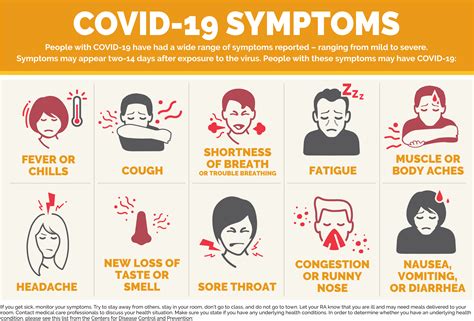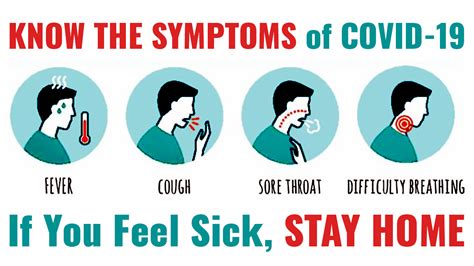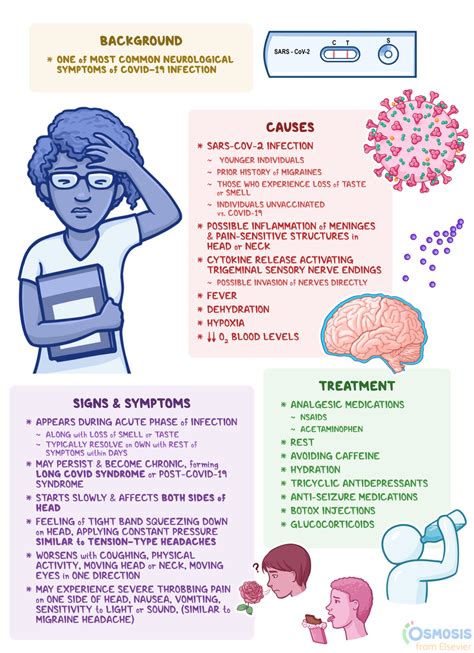Intro
Identify 5 key Covid symptoms, including fever, cough, and fatigue, and learn about related signs like shortness of breath, headache, and loss of taste, to stay informed about coronavirus infections and take preventive measures.
The COVID-19 pandemic has brought about a significant shift in the way we live, work, and interact with one another. As the virus continues to evolve, it's essential to stay informed about the symptoms, prevention methods, and treatment options available. One of the most critical aspects of managing COVID-19 is recognizing its symptoms, which can range from mild to severe. In this article, we'll delve into the 5 most common COVID-19 symptoms, their effects on the body, and what you can do to protect yourself and your loved ones.
The importance of understanding COVID-19 symptoms cannot be overstated. By recognizing the signs of infection, individuals can seek medical attention promptly, reducing the risk of complications and transmission to others. Moreover, being aware of the symptoms can help alleviate anxiety and uncertainty, enabling people to take proactive steps to maintain their health and well-being. As we navigate the complexities of the pandemic, it's crucial to stay up-to-date with the latest information and guidelines from reputable sources, such as the World Health Organization (WHO) and the Centers for Disease Control and Prevention (CDC).
The COVID-19 pandemic has highlighted the need for global cooperation, scientific research, and community engagement. As we work together to combat the virus, it's essential to prioritize education, awareness, and empathy. By sharing knowledge, resources, and experiences, we can build a stronger, more resilient community that supports the health and well-being of all individuals. Whether you're a healthcare professional, a concerned citizen, or someone who has been directly affected by COVID-19, this article aims to provide you with valuable insights, practical advice, and a deeper understanding of the 5 most common COVID-19 symptoms.
Introduction to COVID-19 Symptoms

Understanding the 5 Most Common Symptoms
The 5 most common COVID-19 symptoms are: * Fever: A high temperature, usually above 100.4°F (38°C), which can be accompanied by chills, sweating, and body aches. * Cough: A dry, persistent cough that may produce mucus or phlegm. * Fatigue: Feeling extremely tired, weak, or exhausted, which can make it difficult to perform daily activities. * Headache: A severe, persistent headache that may be accompanied by sensitivity to light, sound, or smell. * Shortness of breath: Difficulty breathing, feeling winded, or experiencing chest tightness or pain.The Importance of Fever in COVID-19

Managing Fever and Other Symptoms
To manage fever and other COVID-19 symptoms, it's essential to: * Stay hydrated by drinking plenty of fluids, such as water, clear broths, or electrolyte-rich beverages. * Rest and avoid strenuous activities to help the body recover. * Use over-the-counter medications, such as acetaminophen or ibuprofen, to reduce fever and alleviate headaches or body aches. * Practice good hygiene, such as washing hands frequently, covering the mouth and nose with a mask, and avoiding close contact with others.The Role of Cough in COVID-19

Understanding the Relationship Between Cough and Other Symptoms
Cough is often accompanied by other symptoms, such as fever, fatigue, and shortness of breath. In some cases, cough can be a sign of a more severe infection, which requires prompt medical attention. By recognizing the relationship between cough and other symptoms, individuals can seek medical attention promptly and reduce the risk of complications.Fatigue and COVID-19

Understanding the Impact of Fatigue on Daily Life
Fatigue can have a significant impact on daily life, making it difficult to work, attend school, or engage in social activities. By recognizing the signs of fatigue and taking proactive steps to manage it, individuals can reduce the risk of complications and improve their overall quality of life.Headache and COVID-19

Understanding the Relationship Between Headache and Other Symptoms
Headache is often accompanied by other symptoms, such as fever, fatigue, and shortness of breath. By recognizing the relationship between headache and other symptoms, individuals can seek medical attention promptly and reduce the risk of complications.Shortness of Breath and COVID-19

Understanding the Impact of Shortness of Breath on Daily Life
Shortness of breath can have a significant impact on daily life, making it difficult to perform daily activities, such as walking, climbing stairs, or engaging in social activities. By recognizing the signs of shortness of breath and taking proactive steps to manage it, individuals can reduce the risk of complications and improve their overall quality of life.What are the 5 most common COVID-19 symptoms?
+The 5 most common COVID-19 symptoms are fever, cough, fatigue, headache, and shortness of breath.
How can I manage COVID-19 symptoms at home?
+To manage COVID-19 symptoms at home, it's essential to stay hydrated, get plenty of rest, practice stress-reducing techniques, and use over-the-counter medications to alleviate symptoms.
When should I seek medical attention for COVID-19 symptoms?
+It's essential to seek medical attention if COVID-19 symptoms persist or worsen over time, or if you experience difficulty breathing, chest pain, or severe headache.
As we continue to navigate the complexities of the COVID-19 pandemic, it's essential to prioritize education, awareness, and empathy. By recognizing the 5 most common COVID-19 symptoms and taking proactive steps to manage them, individuals can reduce the risk of complications and improve their overall quality of life. We invite you to share this article with your friends and family, and to take a moment to reflect on the importance of COVID-19 awareness and prevention. Together, we can build a stronger, more resilient community that supports the health and well-being of all individuals. If you have any questions or concerns about COVID-19 symptoms or prevention, please don't hesitate to reach out to a healthcare professional or leave a comment below.
